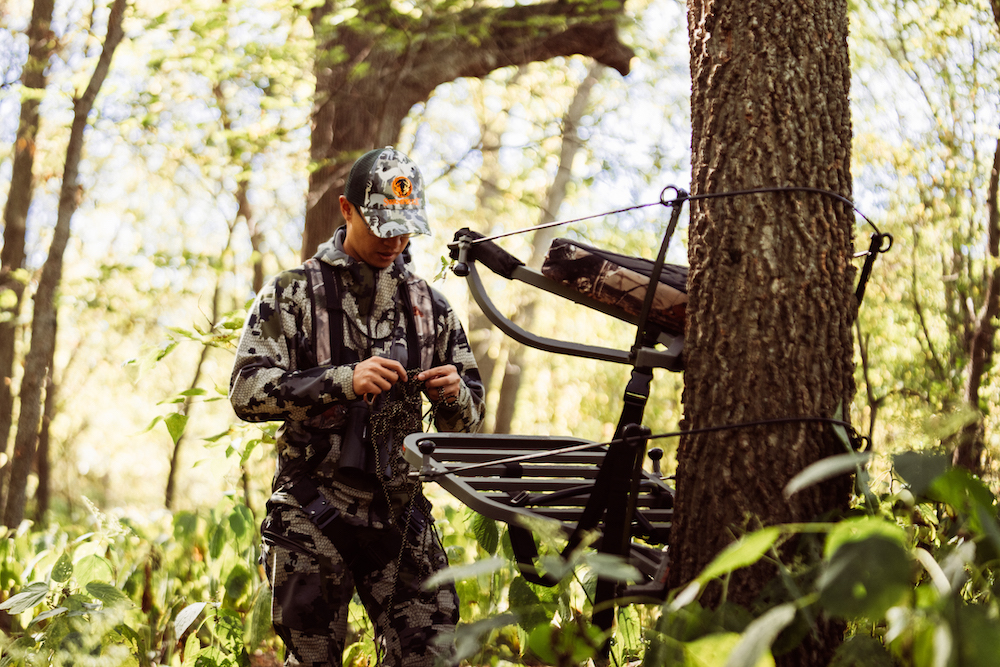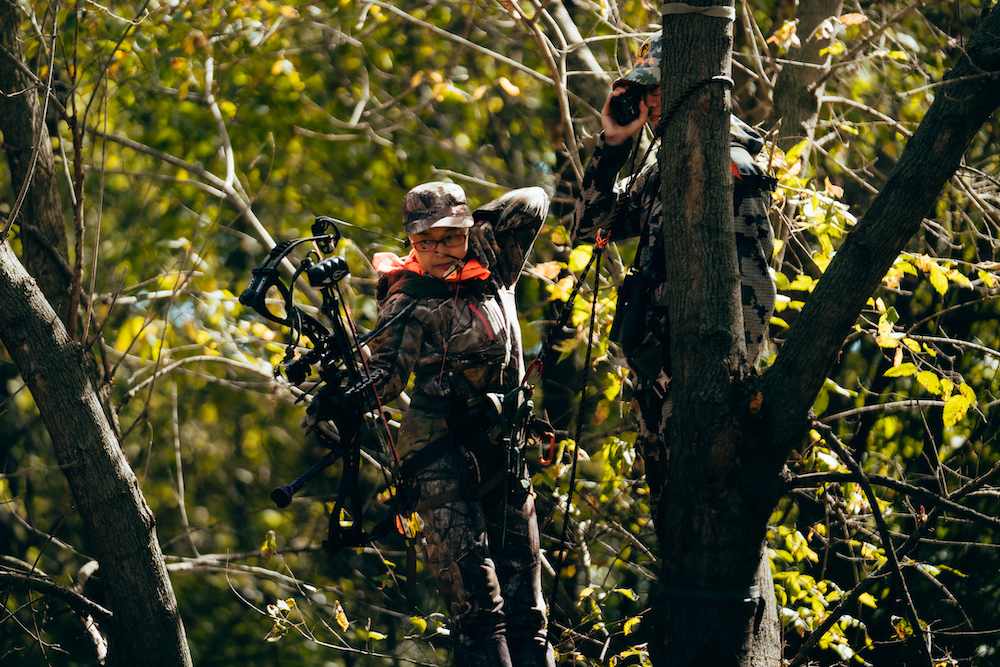September traditionally kicks off bowhunting season across the U.S. It brings opening day in many states, and in others, hunters head to the woods to scout and prepare. Often, season prep means checking and hanging treestands.
September is also National Treestand Safety Month. Using a treestand to bowhunt is safe, effective and enjoyable. Bowhunters can conceal scent and movement, which often gives them time to make a good shot. However, without the proper safety precautions, treestands become dangerous.
In recent years, there’s been a big push to educate hunters about staying safe. According to the Tree Stand Safety Awareness Foundation, there’s been a 43% reduction in treestand falls requiring emergency care. TSSA wants to make treestand safety second nature. The nonprofit developed the “ABCs of Tree Stand Safety” as an easy reminder for hunters.
“By practicing these four simple steps, you can fully enjoy your treestand hunting experience and come home safe,” said Glen Mayhew, president of TSSA.

Take a look at all of your equipment before you use it. Photo Credit: BU
While it might seem easy to hang a treestand and then use it year after year, on most public land that’s illegal, in addition to being unsafe. The National Bowhunter Education Foundation administers the bowhunter education curriculum, which includes an entire section on treestand safety.
NBEF encourages bowhunters to thoroughly inspect treestands for defects, weaknesses, excessive wear and missing parts. Tighten bolts and look for frayed ropes and straps. Replace any worn or broken parts before use. Use manufacturer parts, not homemade. Don’t skimp on safety during your inspection. According to TSSA, 35% of falls were due to inspection elements.
Fall-arrest systems are designed to keep hunters safe in the event of a fall. About 86% of hunters injured during falls were not wearing a harness, according to TSSA. It’s important to have an FAS that meets industry standards. It’s also critical to wear it properly. Fall-arrest systems are much different from hunting saddles. Never use a hunting saddle in place of an FAS while in a treestand.
Practice buckling and adjusting your FAS prior to climbing the stand. If it’s your first time using one, have a buddy present to make sure you’re doing it properly. Attach the FAS’s tree strap so that it’s at head level while you’re standing. Make sure there’s not much slack while you’re seated. If you fall, you want to be able to get back in the stand.

Maintain three points of contact, such as both feet and a hand, at all times when climbing. Photo Credit: BU
Injuries and deaths are more likely to occur when hunters ignore safety precautions. In fact, 99% of treestand fall victims were not attached, according to TSSA. Connect your FAS before your feet ever leave the ground. Once you are securely attached, use three points of contact with your hands and feet when climbing in and out of stands.
Bowhunters don’t love to share their secret spots, but when it comes to staying safe, it’s important to let people know where your stands hang. If an emergency happens, every minute counts. Before every sit, share your location with a spouse, parent or trusted hunting buddy. You can share digital mapping points, GPS coordinates or written accurate descriptions.
If you have multiple stands in an area and don’t know which one you plan to use until you arrive, let someone know once you come to a decision. If you’re out of service, make sure people know which stand you’re most likely to use and the locations of the others. While you’re in your stand have your cellphone or satellite communication device on your body and easily accessible. In the event of a fall or other emergency, you’ll want to be able to get to your phone to call for help.
Those are TSSA’s basic “ABCs of Tree Stand Safety,” but there are some more to consider:
Hauling archery equipment into a treestand requires taking the proper precautions. Never carry your bow and arrows up and down the tree. Always use a haul line made of heavy cord attached to your treestand. Be sure broadheads are covered in a quiver so they can’t cut the rope or you. Once you tie the line to your bow, keep the bow away from your climbing route in case you lose your footing.

Inspect your saddle with the same care as other treestands. Photo Credit: BU
Saddle hunting is another form of elevated hunting. Saddles are designed to keep the hunter tethered to the tree at all times. But saddles are not fall-proof. Falls can happen when hunters don’t use them properly or are being careless. It’s important to inspect equipment for wear and tear before each hunt. Replace parts that show any signs of fraying or wear. It’s also important to use saddles designed and tested by manufacturers, not homemade systems.
Elevated hunting provides an amazing opportunity to stay concealed and get a good shot. However, it doesn’t come without risks. With knowledge and the right equipment, you can stay safe and improve your odds of getting a shot. This September, celebrate National Treestand Safety Month by following the ABC and D, E, and Fs of treestand safety. Remember, you can bruise a lot more than your ego if you don’t.